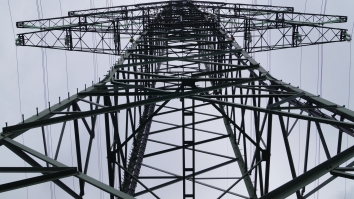Post-Paris: Taking another look at thorium nuclear
By William ByunGoodbye to all that
Being active in the renewable energy and climate change sector for over the past decade has meant witnessing many changes in the field. Renewables became fashionable, then fell off the table post the 2008 financial crisis, then became fashionable again.
A lot of investment funds were raised to target it – but much now languishes as excess dry powder or as investments with a tricky exit. Another major driver was the Kyoto Protocol – then it wasn’t – but may be again due to the recent Paris Agreement on climate change.
Especially with respect to climate change, the concerns were urgent and immediate post Rio. And then urgent and immediate again post Kyoto. And urgent and immediate again every year – while inexorably, greenhouse gas ("GHG") levels have steadily marched ever higher. The arguments have remained relevant and even more so, that without serious and sizeable action to stem such rising GHG levels, we are in effect killing ourselves through destroying our world.
Yet – despite clear knowledge otherwise, people do still smoke, get fat, pursue harmful addictions, and make unwise life decisions despite clear links demonstrating we are indeed "killing ourselves" quite directly via emphysema, Type II diabetes, heart attacks, etc.
Like eating whole grains and exercising more was to lead to a healthier regime, a move towards renewables was to provide the alternative and healthier choice to combat the GHG crisis. Yet in practice in emerging Asia, the deployment of renewables was simply not sufficiently in scale to satisfy the significant increases on the power demand side.
While the rollout of renewables has made some meaningful additions to national grids (sometimes), overall, each 10MW biomass plant or 5MW solar plant or even 100MW farm simply could not reduce the increasing supply/demand shortfall that a 1000MW thermal plant could.
To have sufficient scale would be ruinous in other ways: with absurd results such as to have Singapore go solar meaningfully would mean covering the entire island in panels; or tragically ironic results such as a massive rollout of biomass would mean that for the next 70~100 years, there would actually be a huge increase in carbon at least until the new growth locks back in that released carbon.
Facing renewables with a reality check, given the present technology, renewables alone are not the solution. And just like the seriously overweight, we cannot simply kill ourselves with a knife and fork while waiting for some new diet technology to come eventually.
The elephant in the room… nuclear
Just the mention of nuclear though evokes a visceral wince. Yes, the MWs are plentiful and in scale, but other attendant issues – the weaponisation/proliferation, the catastrophic scale potential such as from a Fukushima, the 20,000+ years waste storage needed – the nuclear issues are too starkly defined by such flashpoint markers.
In such case, we may need to revisit nuclear again with fresh eyes and, in that respect, a fresh look at the technologies too. We do not need to solely consider granddad's nuclear plant, technologies have also progressed since the present generations of plants were built. Newer, safer configurations exist, passive fail-safe systems, new fusion works. Yet as more incrementalist in nature, these directions may not be as allaying.
The thorium paradigm change
More interestingly, quietly across various parts of Asia and especially aggressively such as in India have been various national initiatives to passive nuclear energy systems via thorium rather than uranium/plutonium. The difference is significant as thorium systems would be inherently stable and non-explosive, have no weapons potential, and have much smaller waste footprints with drastically shorter half-lifes of decades rather than thousands of years.
Regarding actually realising the GHG curbs under the Paris Agreement, at present technology levels the only meaningful look is nuclear. But instead of rehashing the same old-same old nuclear arguments and "traditional" nuclear technologies, thorium-based nuclear may then be not only a "better nuclear", but conceptually so different a shift that we should consider it as a serious scaleable alternative to fill the supply/demand gap between current GHG baseloads, and baby-step (and sized) renewables.
So for me too, I will be giving another look at new nuclear technologies and approaches such as via thorium.
























 Advertise
Advertise







